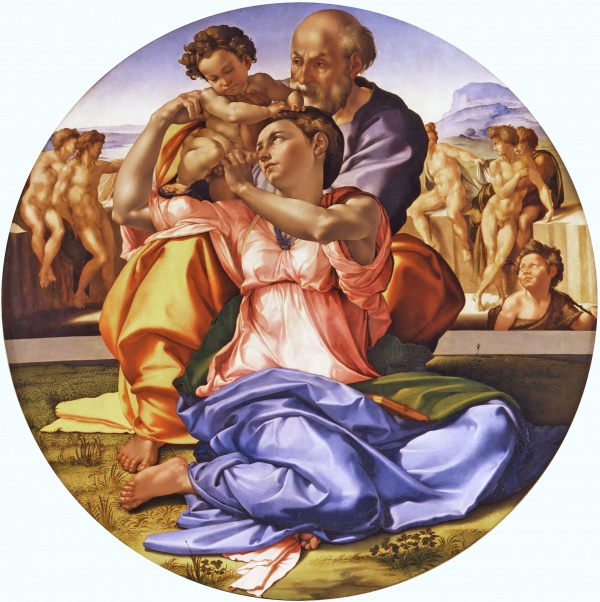Facts About Doni Tondo (Doni Madonna)
The "Doni Tondo" also known as the "Doni Madonna" is a magnificent panel painting by Michelangelo, housed in the Uffizi Gallery in Florence, Italy. This masterpiece was commissioned by Agnolo Doni to commemorate his marriage to Maddalena Strozzi. The painting, featuring the Holy Family in a circular, or tondo, format, is replete with symbolic elements and diverse artistic influences.
At the center of the painting, Mary is depicted seated on the ground, accompanied by Joseph and John the Baptist, who are also prominently featured. The background includes five nude male figures, which have generated considerable interpretations and debates among art historians.
Michelangelo's technique in the "Doni Tondo" is truly remarkable. He employs vibrant colors and renders sculptural figures with meticulous attention to drapery folds. The composition reflects influences from Leonardo da Vinci's works, Luca Signorelli's stylistic elements, and even classical art such as the Laocoön sculpture. The plant motifs in the painting further enhance its symbolism, representing themes of humility, salvation, and the Holy Trinity.
Scholars have posited various theories about the painting's underlying meaning. Some interpret it as having devotional aspects, while others identify references to family values and baptismal symbolism. Experts like Paul Barolsky, Mirella D’Ancona, Andrée Hayum, and Roberta Olson have all contributed insights into the painting's religious, artistic, and familial significance.
Ultimately, the "Doni Tondo" stands as a testament to Michelangelo's exceptional skill and creativity. It invites viewers to delve into its rich symbolism and complex interpretations, making it a truly captivating work of art.

 Slovenia
Slovenia